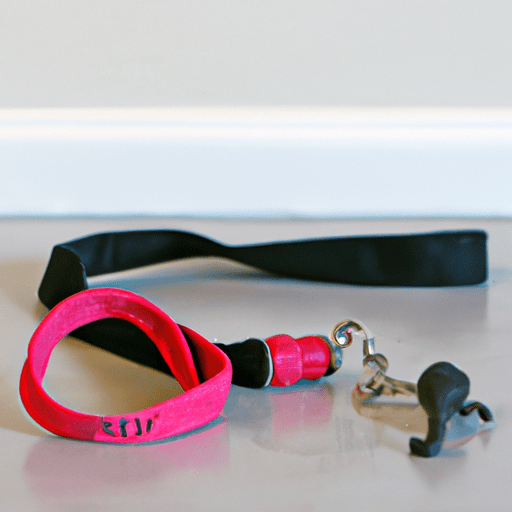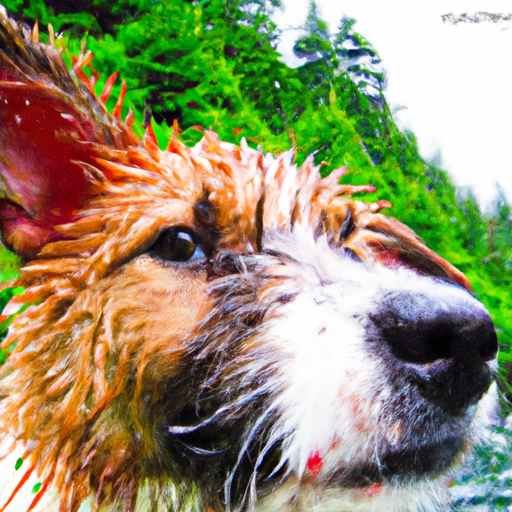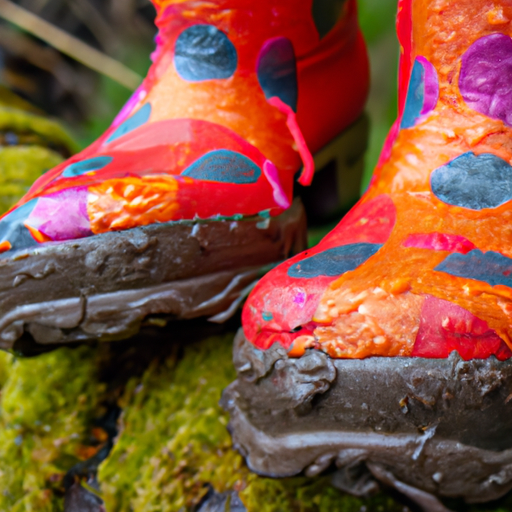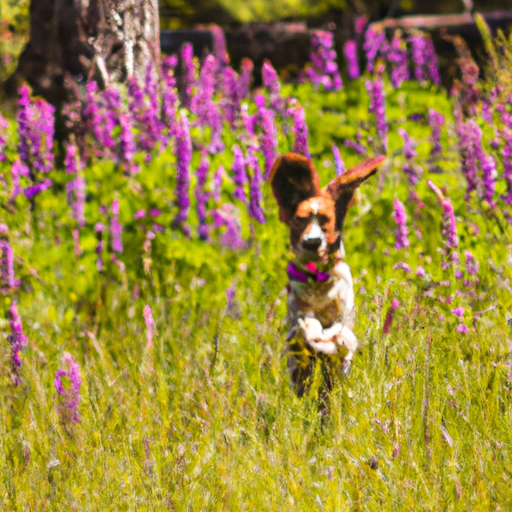Owning a puppy is an exciting and rewarding experience, but it also comes with its fair share of challenges. If you're wondering how to establish a consistent daily routine for your furry friend, you've come to the right place. By implementing a structured schedule that includes regular feeding times, exercise, training, and rest, you can help your puppy develop good habits and thrive in their new environment. In this article, we'll explore some practical tips and strategies to ensure that your puppy's daily routine is both beneficial for them and manageable for you. So, let's dive in and create a harmonious routine that will set the foundation for a happy and well-behaved pup!
1. Understanding the Importance of a Consistent Daily Routine
Having a consistent daily routine is crucial for puppies as it provides them with structure, stability, and predictability. Just like humans, puppies thrive when they have a set schedule to follow. A routine helps them understand what to expect each day, reducing stress and anxiety. It also helps puppies develop a sense of independence and responsibility as they learn to anticipate and meet their needs. By establishing a consistent daily routine, you are setting your puppy up for success and ensuring their overall well-being.
1.1. Why a Consistent Routine is Important for Puppies
A consistent routine is particularly important for puppies because they are still in the process of developing good habits and learning about the world around them. By following a regular schedule, you can guide your puppy towards appropriate behavior, establish boundaries, and reinforce positive habits. A consistent routine also helps with potty training, as it allows you to anticipate when your puppy will need to relieve themselves and ensure they have regular opportunities to do so outside. Additionally, a routine promotes better sleep patterns, encourages socialization, and supports your puppy's overall physical and mental growth.
1.2. Benefits of Establishing a Consistent Daily Routine
Establishing a consistent daily routine provides numerous benefits for both you and your puppy. Firstly, it helps you maintain a sense of order and structure in your own life. By knowing when your puppy needs to eat, exercise, and rest, you can plan your own activities around their needs. This enables you to strike a balance between caring for your puppy and attending to your own responsibilities. Furthermore, a consistent routine helps strengthen the bond between you and your puppy, as they come to rely on you for their daily care. By consistently meeting their needs, you become a trusted and reliable caregiver, which deepens the connection between you.
2. Creating a Schedule for Your Puppy
Before diving into creating a schedule for your puppy, there are several factors to consider to ensure their routine aligns with their specific needs. Understanding your puppy's age, breed-specific requirements, and your own daily schedule is essential for creating a routine that works for both of you.
2.1. Determining Your Puppy's Age and Breed-Specific Needs
The age of your puppy plays a significant role in determining their routine. Young puppies require more frequent meals, potty breaks, and naps compared to older dogs. As they grow, their needs change, and it's crucial to modify their schedule accordingly. Additionally, different breeds have varying energy levels, exercise requirements, and attention spans. Understanding your puppy's breed-specific needs will help you tailor their routine to provide appropriate mental and physical stimulation.
2.2. Considering Your Own Daily Schedule
When creating a routine for your puppy, it's important to consider your own daily schedule and commitments. Take into account your work hours, personal activities, and any other responsibilities that may affect your availability to care for your puppy. By aligning your puppy's schedule with your own, you can ensure they receive the necessary attention, exercise, and care without causing unnecessary stress or inconvenience.
2.3. Deciding on a Routine That Works for Both of You
Once you have gathered all the necessary information about your puppy's age, breed-specific needs, and your own schedule, it's time to create a routine that works for both of you. Start by mapping out the essential activities such as mealtime, potty breaks, exercise, playtime, and rest. Then, allocate specific time slots for each activity based on the information you have gathered. It's important to be flexible and realistic when designing the routine, considering unexpected events and allowances for variation.
3. Feeding and Mealtime Routine
Establishing a consistent feeding and mealtime routine is essential for your puppy's overall health, digestion, and development. By following a structured approach to mealtime, you can promote healthy eating habits and prevent potential issues such as resource guarding or overeating.
3.1. Establishing Regular Meal Times
Start by determining the ideal number of meals for your puppy based on their age and breed. Young puppies generally require frequent meals throughout the day, while older puppies can transition to fewer meals. Once you have identified the appropriate number of meals, establish regular meal times that align with your puppy's needs and your own schedule. Consistency in meal times helps regulate your puppy's digestive system and helps them anticipate when food will be available.
3.2. Consistency in Meal Portions and Location
To maintain a healthy weight and prevent overeating, it's important to provide consistent portion sizes for your puppy's meals. Consult with your veterinarian to determine the appropriate portion size based on your puppy's age, breed, and activity level. Additionally, choosing a designated feeding area and using the same bowl each time helps create a familiar routine for your puppy. This consistency reinforces their understanding that mealtime only happens in a specific location.
3.3. Developing a Pre- and Post-Meal Routine
Creating a pre- and post-meal routine can help signal to your puppy that it's time to eat or that mealtime is over. Before feeding, you might ask your puppy to sit or perform a simple command, reinforcing obedience and good behavior. After the meal, allow a short period for digestion before engaging in active play or exercise. This routine helps prevent bloating or discomfort and establishes boundaries around mealtime behavior.
4. Bathroom Breaks and Potty Training
Establishing a routine for bathroom breaks is crucial for successful potty training and maintaining a clean environment for both you and your puppy. Consistency in providing ample opportunities for your puppy to relieve themselves helps them develop good bathroom habits.
4.1. Establishing a Routine for Bathroom Breaks
Puppies have small bladders and need frequent bathroom breaks, especially at a young age. Create a schedule that includes regular outings to designated potty areas throughout the day. Take your puppy outside first thing in the morning, after meals, and before bedtime. Additionally, establish a routine for bathroom breaks after play sessions or when your puppy shows signs of needing to go.
4.2. Monitoring Signs of Needing to Relieve Themselves
Understanding your puppy's body language and behavior is key to successful potty training. Some signs that your puppy may need to relieve themselves include circling, sniffing the ground, restlessness, or whining. Monitor your puppy closely, especially during their early training stages, and promptly take them outside when you notice these signs.
4.3. Positive Reinforcement for Successful Potty Training
Reward your puppy with praise and treats every time they successfully eliminate in the appropriate area. Positive reinforcement reinforces the desired behavior and encourages them to repeat it in the future. Avoid scolding or punishment for accidents, as this can create fear or confusion. Instead, be patient and consistent, offering encouragement and guidance throughout the potty training process.
5. Exercise and Playtime
Regular exercise and playtime are essential for your puppy's physical and mental well-being. By incorporating these activities into your daily routine, you can help your puppy burn off excess energy, promote healthy growth, and strengthen the bond between you.
5.1. Determining the Appropriate Exercise Level for Your Puppy
Different breeds have varying exercise requirements, and it's important to tailor your puppy's exercise routine accordingly. Consult with your veterinarian to determine the ideal exercise duration and intensity for your puppy's age and breed. Puppies should engage in both controlled exercise, such as walks, and free play to allow them to explore and expend energy.
5.2. Incorporating Regular Playtime into the Daily Routine
Designate specific time slots throughout the day for dedicated playtime with your puppy. Engage in activities that stimulate their senses, such as playing with toys, teaching new tricks, or practicing obedience training. Not only does this provide mental stimulation, but it also strengthens the bond between you and helps redirect any potential destructive behavior.
5.3. Balancing Mental and Physical Stimulation
While physical exercise is important, mental stimulation is equally crucial for your puppy's overall development. Incorporate interactive toys, puzzle games, and training sessions into their daily routine. Mental stimulation helps prevent boredom and promotes problem-solving skills, which can lead to a well-rounded and mentally healthy dog.
6. Socialization and Training
Socialization and training should be an integral part of your puppy's daily routine. Early exposure to different environments, people, and animals helps your puppy develop confidence, good manners, and the ability to adapt to various situations.
6.1. Regularly Exposing Your Puppy to Different Environments
Take your puppy to various places such as parks, pet-friendly stores, and friend's houses to expose them to different sights, sounds, and smells. This exposure helps them build positive associations and reduces the likelihood of fear or anxiety in new situations. Start with short visits and gradually increase the duration as your puppy becomes more comfortable.
6.2. Scheduling Training Sessions for Consistency
Dedicate specific time slots for training sessions in your puppy's daily routine. Consistency is key when it comes to training, so regular sessions help reinforce commands, establish boundaries, and address any behavioral issues early on. Use positive reinforcement techniques and reward-based training methods to motivate and encourage your puppy.
6.3. Including Socialization Opportunities in the Routine
Incorporate socialization opportunities into your puppy's routine by scheduling playdates with other friendly and vaccinated dogs. This interaction allows your puppy to learn appropriate social skills, practice polite behavior, and build confidence when interacting with other dogs. Always supervise these interactions and ensure the play environment is safe and secure.
7. Nap and Rest Times
Puppies need plenty of rest and sleep to support their growth and development. Establishing regular nap and rest times helps prevent overstimulation, reduces the risk of behavioral issues, and aids in their overall well-being.
7.1. Understanding Your Puppy's Sleep Needs
Puppies require more sleep than adult dogs as their bodies are actively growing and developing. On average, puppies need around 18-20 hours of sleep per day. However, the exact amount can vary depending on their age, activity level, and breed. Observe your puppy's behavior and energy levels to identify signs of fatigue or when they may need to rest.
7.2. Providing a Comfortable Sleeping Area
Designate a comfortable and quiet area for your puppy to sleep and rest. Provide a cozy bed or crate with soft bedding that offers security and comfort. Having a dedicated sleeping area helps your puppy associate that space with relaxation and downtime.
7.3. Establishing Regular Nap and Rest Times
Incorporate regular nap and rest times into your puppy's daily routine. Puppies may need short naps every few hours interspersed with play and training sessions. Plan for longer rest periods during the day to provide them with ample time to recuperate. By establishing consistent nap and rest times, you can help regulate your puppy's energy levels and prevent them from becoming overtired or overstimulated.
8. Grooming and Hygiene Routine
Regular grooming and hygiene practices are important to ensure your puppy's health, cleanliness, and overall well-being. Establishing a grooming routine early on helps your puppy become comfortable with necessary grooming procedures and promotes a positive association with grooming activities.
8.1. Daily Brushing and Coat Maintenance
Depending on your puppy's coat length and type, daily brushing may be necessary to prevent mats, tangles, and excessive shedding. Establish a brushing routine that includes gentle handling, positive reinforcement, and rewards to turn grooming into a positive experience for your puppy.
8.2. Weekly Nail Trimming and Ear Cleaning
Trimming your puppy's nails is essential for maintaining foot health and preventing discomfort while walking. Aim to trim their nails on a weekly basis, using appropriate nail clippers designed for dogs. Additionally, regular ear cleaning helps prevent ear infections and wax buildup. Use a specialized ear cleaning solution and clean your puppy's ears gently, avoiding the use of cotton swabs.
8.3. Establishing a Bathing Schedule
Determine an appropriate bathing schedule based on your puppy's breed and activity level. While some puppies may require more frequent baths, others may only need bathing once every few weeks. Use a mild, dog-specific shampoo and ensure the water temperature is comfortable for your puppy. Remember to reward and praise them during and after the bath to reinforce positive behavior.
9. Managing Separation and Alone Time
Teaching your puppy to be comfortable with alone time is crucial for their independence and well-being. By gradually introducing separation and creating a safe space, you can help prevent separation anxiety and foster their ability to self-soothe.
9.1. Gradually Introducing Alone Time
Start by leaving your puppy alone for short periods, gradually increasing the duration as they become more comfortable. Begin with just a few minutes and gradually build up to longer absences. This gradual approach helps your puppy learn that you will always return and reduces the likelihood of separation anxiety.
9.2. Creating a Safe and Comfortable Space for Your Puppy
Designate a specific area, such as a crate or a puppy-proofed room, where your puppy can safely stay when you are not around. Ensure this space is comfortable, with appropriate bedding, toys, and access to water. This creates a secure environment where your puppy can relax and feel at ease when left alone.
9.3. Building Independence through Short Absences
As your puppy becomes more accustomed to short absences, gradually increase the time you spend away. Make sure to provide them with mental stimulation and interactive toys to keep them occupied during your absence. Building their independence gradually helps them develop coping mechanisms and reduces the likelihood of separation-related issues.
10. Adjusting and Modifying the Routine
As your puppy grows and develops, their needs will change. It's important to monitor their behavior, consult with professionals, and make necessary adjustments to their daily routine to ensure their continued well-being.
10.1. Monitoring Your Puppy's Development and Changing Needs
Continuously observe your puppy's behavior, appetite, and energy levels to identify any changes or signs that their routine needs adjusting. As they grow older, they may need less sleep, more exercise, or different feeding requirements. Regularly check in with your veterinarian to ensure your puppy's routine aligns with their current health and developmental stage.
10.2. Making Gradual Changes to the Daily Routine
When introducing changes to your puppy's routine, it's important to do so gradually. Sudden changes can cause stress or confusion. If you need to modify the schedule, make adjustments in small increments, allowing your puppy to adapt and get comfortable with the new routine before making any additional changes.
10.3. Seeking Professional Advice When Necessary
If you encounter challenges or have specific concerns about your puppy's routine, seek guidance from professionals such as veterinarians, dog trainers, or behaviorists. They can provide expert advice tailored to your puppy's individual needs and help you navigate any obstacles or issues that arise.
By following a consistent daily routine for your puppy, you are nurturing their physical and mental well-being, promoting healthy habits, and strengthening the bond between you. Remember that each puppy is unique, so it's important to tailor the routine to their specific needs and continue to adjust as they grow and develop. With patience, consistency, and a little bit of planning, you can establish a routine that sets both you and your puppy up for a happy and harmonious life together.






